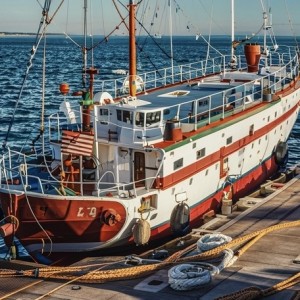Rope and cable are mainly used in ship equipment, fishing, port loading and unloading, power construction, petroleum exploration, national defense and military industry, sports goods and other fields. Its structure is divided into three strand, eight strand, and twelve strand ropes. The product is widely used and has the characteristics of high strength, low elongation, wear resistance, softness and smoothness, and easy operation.


Precautions for the use of ropes and cables: Before each use, the ropes and cables should be carefully checked for any damaged parts such as cuts, broken strands, broken wires, or knots on the rope body. If there are no abnormalities or defects, they can be used normally; When unfolding the rope, it should be released from the end of the rope inside the circle, and the rope should be released counterclockwise. If the rope is unfolded counterclockwise, it will twist. If a knot occurs, the rope should be returned to the loop, flipped over, and then pulled out from the center. A better method is to unfold the rope on a turntable, at which point the rope can be pulled out from the outer end. If personnel stand under excessively tight ropes, danger will occur. Once the ropes lose control, a huge rebound force will be generated, which may cause casualties.
If the rope is unfolded from the rope shaft, the rope shaft itself should rotate freely. It is easy to achieve this by passing a tube through the center of the rope shaft, but it is forbidden to unfold the rope vertically; If the rope is unfolded from the pulley device, the ratio of the diameter D of the pulley to the diameter d of the rope should exceed 5, but for some high-performance fiber ropes, the ratio can reach 20. For ropes, it is recommended that the diameter of the pulley groove be 10% -15% larger than the diameter of the rope. If the curvature of the rope in contact with the pulley groove is 150 degrees, the rope can reach the optimal stress state. The height of the pulley flange should be at least 1.5 times the diameter of the rope to prevent the rope from running out of the pulley. In addition, the pulley should be inspected regularly and the bearings should be maintained regularly to ensure smooth rotation of the pulley. The rope and cable should be scrapped or stopped from use in the following situations: obvious burning or melting of the rope and cable; The straight-line distance is equal to the length of the rope, and the volume of the surface rope yarn or rope strand decreases by 10%; Rope leakage in extreme temperature environments beyond the range; Degradation due to UV exposure, the surface of the rope yarn becomes fragmented; The rope cable appears in severely damaged areas of hot melt, hardening, and flattening; The number of rope yarns affected by melting or fusion exceeds 20%.
Polymer polyethylene rope is the highest fiber in the world, and the famous Dutch Dyneema is a representative. It cannot be denied that China's domestically produced polymer polyethylene still has a strength gap of about 10% compared to it, but it has an absolute advantage in terms of cost-effectiveness and sales volume, because the strength difference of 10% can be remedied by slightly increasing the diameter. But Chinese polymer research and development companies and institutions are constantly improving, their strength is constantly increasing, and one day they will surpass the Netherlands. Only competition can make raw material suppliers continuously improve their quality
Polymer polyethylene rope is the highest fiber in the world, and the famous Dutch Dyneema is a representative. It cannot be denied that China's domestically produced polymer polyethylene still has a strength gap of about 10% compared to it, but it has an absolute advantage in terms of cost-effectiveness and sales volume, because the strength difference of 10% can be remedied by slightly increasing the diameter. But Chinese polymer research and development companies and institutions are constantly improving, their strength is constantly increasing, and one day they will surpass the Netherlands. Only competition can make raw material suppliers continuously improve their quality
In the future, polymer polyethylene applications will dominate, and people will definitely not choose heavy, low strength ordinary cables. With competition among raw material suppliers, it is inevitable that raw material prices will decrease, making them more affordable. Polymer polyethylene ropes will become mainstream products! If you need polymer ropes, please contact me and I will give you a very favorable price
Post time: Nov-11-2024








